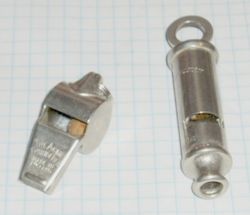AY Honors/Whistles/Answer Key
2,ylih ckefj
[whistle on radio.jpg|thumb|right|A party whistle.]]
a,jwjgdc,gwqjj,hgw2ljhfckl2wjhg,jhgqdxkjgbwvdkjugtm HGQTW21UKD2a chaotic vibrato effect that intensifies the sound. Japanese bird whistles use several small balls and are half filled with water in order to reproduce the sound of a bird song.
A steam whistle works the same way, but using steam as a source of pressure: such whistles can produce extremely high sound intensities.
Sometimes, unintentional whistles can be set up. A common one HGDDCGWKU,GCKFEGTCJGDGdisorientation]] and dizziness. The effect can be prevented by opening a side window a few inches. Subsonic whistles have also been developed for use as weapons, or to deliberately create a sense of uneasiness in an enemy.Template:Fact
History
The whistle has its roots dating back to ancient China. Chinese night watchmen used to blow into the tops of acorns in order to alert the towns of invading Mongolians.
In ancient Egypt two blades of the papyrus plant along the Nile river were held together in between the palms. By blowing into the palms the papyrus leaves would make a loud vibrant sound.
In 1868 Joseph Hudson (inventor) of Birmingham, England, made the first whistle ever to be used by a football referee. New Zealand referee William Atack was the world's first to use a whistle to stop a game of sport in 1884. It was used for the first time (allegedly) at a game held at Nottingham Forest, prior to this referees used handkerchiefs to attract players attention.
By 1884, Joseph Hudson had perfected his whistles and he released the world's most successful whistle to date, the "Acme Thunderer" (the first ever pea whistle). The whistle has been used as an alarm or attention-getting instrument by all manner of industries, sports and revellers. It continues to sell in great quantities throughout the world.
Police whistles
Hudson later made the first police whistle for the Metropolitan Police Service. Prior to this, police used hand rattles, with whistles only being used as musical instruments or toys. Both rattles and whistles were used to call for back-up in areas where neighbourhood beats overlapped, and following their success in London, the whistle was adopted by most counties in England.
Police whistles fell largely into disuse in 1959, when early hand-held radios were brought into service. With the rise of the motor car, the whistle was no longer usefully audible in urban areas. The whistle is still used by some police forces today, and engraved ceremonial versions are sometimes presented to police officers upon occasions such as their retirement.Template:Fact
Industrial whistles
Industrial whistles are used for signalling and timekeeping both on railroad and ships, and in factories. Most of these whistles were steam powered and not standardized. Individual locomotives could be identified by their whistles. At noontime in industrial areas up into the 1950s whistles of every pitch could be heard, as each factory had a boiler and a whistle, if not full steam power.
Railroads in particular used elaborate whistle codes for communication both within the train and with other trains. These methods are maintained today with motor-powered air horns. Trucks also use air horns, especially since they often have air brakes and so there is already a source of compressed air on board.
Train whistles generally produce three or four different frequencies at the same time, to produce a non-major chord, that is distinct, loud, and low in pitch.
Ship's whistles must be very loud for safety on the seas. Modern ship's whistles can be electrically driven or steam driven. The RMS Queen Mary was originally equipped with three electric Tyfon whistles in 1932. They could be heard at least ten miles away and were tuned to 55 Hz, a low bass A note that was chosen for maximum passenger comfort despite the high sound pressure level.& One of the three whistles was taken back to Kockum Sonics in Malmö, Sweden, where it was refurbished for a new life of service aboard the RMS Queen Mary 2. Modern IMO regulations specify ships' whistle frequencies to be in the range 70-200 Hz for vessels that are over 200 meters in length.& Traditionally, the lower the frequency, the larger the ship. The Queen Mary 2, being 345 meters long, was given the lowest possible frequency (70 Hz) for her regulation whistles which means she carries both 70 Hz modern whistles and a single vintage 55 Hz whistle.
Safety
Whistles are often used as warning devices or as safety devices serving to attract attention to the user. Some cyclists use a whistle as a substitute for a bell or horn. It should be noted, however, that many jurisdictions require that the warning device be permanently attached to the bicycle.
Rescue or Survival whistles are often packed in survival kits and attached to Personal flotation devices to allow a victim to signal for help. The whistle is audible at much greater distances than the human voice, and is less likely to cause exhaustion if used repeatedly. Survival whistles differ from pea whistles in that they are usually flat, so that water cannot collect inside if the user is immersed, for example after falling overboard from a boat.
Whistles can also produce sounds at pitches inaudible to the human ear such as dog whistles which can be heard by dogs at a range beyond that of human sensory perception, or at least conscious perception.
External links
de:Trillerpfeife es:Silbato eo:Fajfilo fr:Sifflet gl:Chifre nl:Scheidsrechtersfluitje ja:ホイッスル ug:دۈدۈت pl:Gwizdek pt:Apito ru:Свисток scn:Friscalettu simple:Whistle sv:Visselpipa


